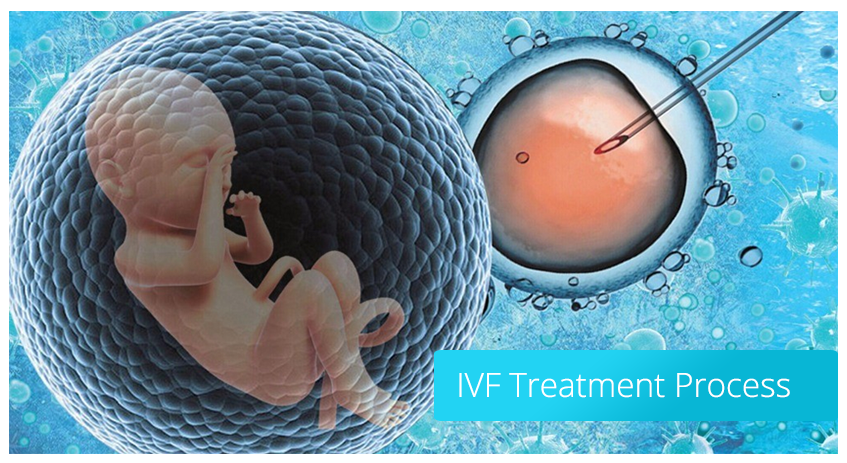Fertility Treatment (In Vitro Fertilization – IVF): How Does It Work, Risks, Benefits, What to Expect
Click for Quick Consultation at vituras
In vitro fertilization (IVF) embarks on a journey that transcends the boundaries of the body, weaving biology and science into a tapestry of hope for those yearning to hold a child of their own. It’s a process bathed in both the delicate whispers of anticipation and the resolute drumbeat of medical precision. At its core, Fertility Treatment bridges the gap between conception and creation, orchestrating the union of a woman’s precious egg and a man’s potent sperm within the confines of a specialized laboratory dish. This intimate dance, guided by the skilled hands of fertility specialists, fosters the miracle of life under the watchful gaze of microscopes and incubators.
The initial stage involves coaxing the woman’s ovaries to bloom, nurturing the maturation of multiple eggs through the gentle prodding of fertility medications. These drugs mimic the body’s natural hormonal orchestration, urging the ovaries to dance to a slightly different rhythm, one that yields a richer harvest of precious oocytes. Once these tiny slumbering life-givers reach their peak, they are retrieved through a minimally invasive procedure, gently guided from their ovarian slumber into the awaiting embrace of the laboratory.
Within the controlled haven of the lab, the magic unfolds. Sperm, potent messengers of paternal potential, are meticulously assessed and selected. Sometimes, a delicate procedure called intracytoplasmic sperm injection (ICSI) lends a helping hand, gently placing a single robust sperm directly into the waiting embrace of an egg, bypassing the obstacles that may hinder natural fertilization. In this precise ballet of life, every step is meticulously choreographed, ensuring the optimal conditions for the sperm and egg to embark on their transformative journey.
As the hours tick by, the fertilized eggs, now budding embryos, divide and grow, their potential unfurling like petals basking in the morning sun. Each cell a brushstroke in the grand painting of life, these tiny universes hold the promise of a beating heart, curious eyes, and a love yet to be known. After this critical period of nurturing, the most promising embryos are chosen, entrusted with the monumental task of embarking on their final leg – the journey back to the mother’s womb.
The embryo transfer is a moment of quiet awe, a microcosm of the grand mystery of life unfolding before our eyes. Guided by a slender catheter, the chosen embryos are gently deposited within the welcoming lining of the uterus, where they may, with a twist of fate and a sprinkle of hope, find their perfect haven and begin their transformation into precious babies.
The road from here is paved with both anticipation and cautious optimism. Pregnancy tests become talismans, each positive result a joyous confirmation that the delicate seed of life has taken root. But even with the success of implantation, the journey remains fraught with the natural anxieties of any pregnancy. Yet, for those who have traversed the gauntlet of infertility, the unwavering hope that burns within them illuminates the path, guiding them through the twists and turns of prenatal care and culminating in the ultimate reward – the birth of a child cradled in love, a testament to the transformative power of IVF (Fertility Treatment).
In essence, IVF is not merely a medical procedure; it’s a beacon of hope for those grappling with the shadows of infertility. It’s a testament to the enduring power of scientific ingenuity and the unyielding love that drives the human spirit to defy limitations and embrace the miracle of life. So, while the process itself may be confined to the sterile confines of a laboratory, the ripple effects of Fertility Treatment extend far beyond, weaving tales of resilience, hope, and the boundless love that fuels the journey towards parenthood.
Fertility Treatment: How does IVF work?
In Fertility Treatment, the first step in IVF is to stimulate the woman’s ovaries to produce multiple eggs. This is done by administering fertility drugs that help to increase the number of eggs that are released during ovulation.
Once the eggs are mature, they are retrieved from the woman’s ovaries through a minor surgical procedure called a transvaginal ultrasound-guided oocyte retrieval. The eggs are then placed in a laboratory dish with the man’s sperm.
The sperm and eggs are allowed to fertilize naturally or with the help of a process called intracytoplasmic sperm injection (ICSI). In ICSI, a single sperm is injected directly into an egg.
The fertilized eggs, or embryos, are then incubated in the laboratory for several days. The embryos that are healthiest and have the best chance of implanting are then transferred to the woman’s uterus.
Risks of IVF
IVF is a safe procedure and Fertility Treatment, but there are some risks associated with it. These risks include:
- Ovarian hyperstimulation syndrome (OHSS): This is a condition that can occur when the ovaries are overstimulated by fertility drugs. Symptoms of OHSS can include abdominal pain, nausea, vomiting, and bloating.
- Multiple pregnancies: IVF can increase the risk of multiple pregnancies, which can be dangerous for both the mother and the babies.
- Ectopic pregnancy: This is a pregnancy that occurs outside of the uterus. Ectopic pregnancies are very dangerous and can be life-threatening.
Benefits of IVF
IVF can be a very successful Fertility Treatment. The success rate of IVF varies depending on the woman’s age and other factors, but it is typically around 30% to 40% per cycle.
What to expect if you are considering IVF
If you are considering IVF, it is important to talk to your doctor about the risks and benefits of the procedure. Your doctor can also help you understand the cost of IVF, which can be significant.
Things to consider before IVF
Before you begin IVF, there are a few things you should consider:
- Your age: IVF success rates are lower for women over the age of 35.
- Your medical history: If you have any health conditions, such as endometriosis or polycystic ovary syndrome (PCOS), it is important to discuss them with your doctor.
- Your financial situation: IVF can be expensive, so it is important to make sure you are prepared for the financial commitment.

What to expect during pregnancy
If you become pregnant after IVF, it is important to follow your doctor’s instructions carefully. You may need to take additional medications or have more frequent prenatal visits.
Frequently asked questions about IVF
- How long does IVF take?
The entire IVF process can take several weeks. The stimulation phase usually takes about two weeks, and the egg retrieval procedure takes about 30 minutes. The embryo transfer procedure takes about 15 minutes.
- How much does IVF cost?
The cost of IVF varies depending on the clinic you choose and the specific procedures you need. The average cost of IVF in the United States is around $12,000 to $15,000 per cycle.
- What are the chances of success with IVF?
The chances of success with IVF vary depending on the woman’s age and other factors. The average success rate of IVF is around 30% to 40% per cycle.
- What are the chances of twins or triplets with IVF?
The chances of twins or triplets with IVF are higher than with natural conception. About 30% of IVF pregnancies result in twins or triplets.
- What are the chances of miscarriage with IVF?
The risk of miscarriage is similar for IVF pregnancies as for natural pregnancies. About 15% of IVF pregnancies end in miscarriage.
IVF can be a challenging but rewarding process for couples who are struggling with infertility. With careful planning and preparation, you can increase your chances of success.
You can also see the article about IVF success rates in Turkiye.











